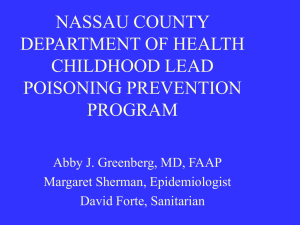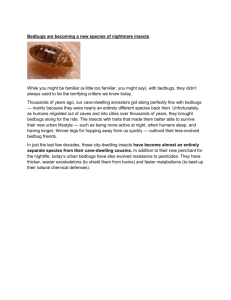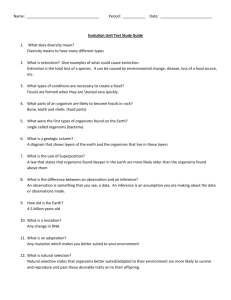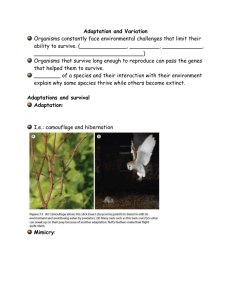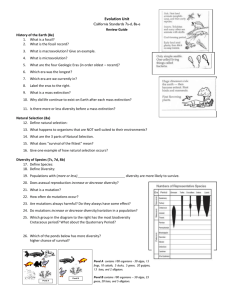Survey of Corn Earworm Populations in
advertisement
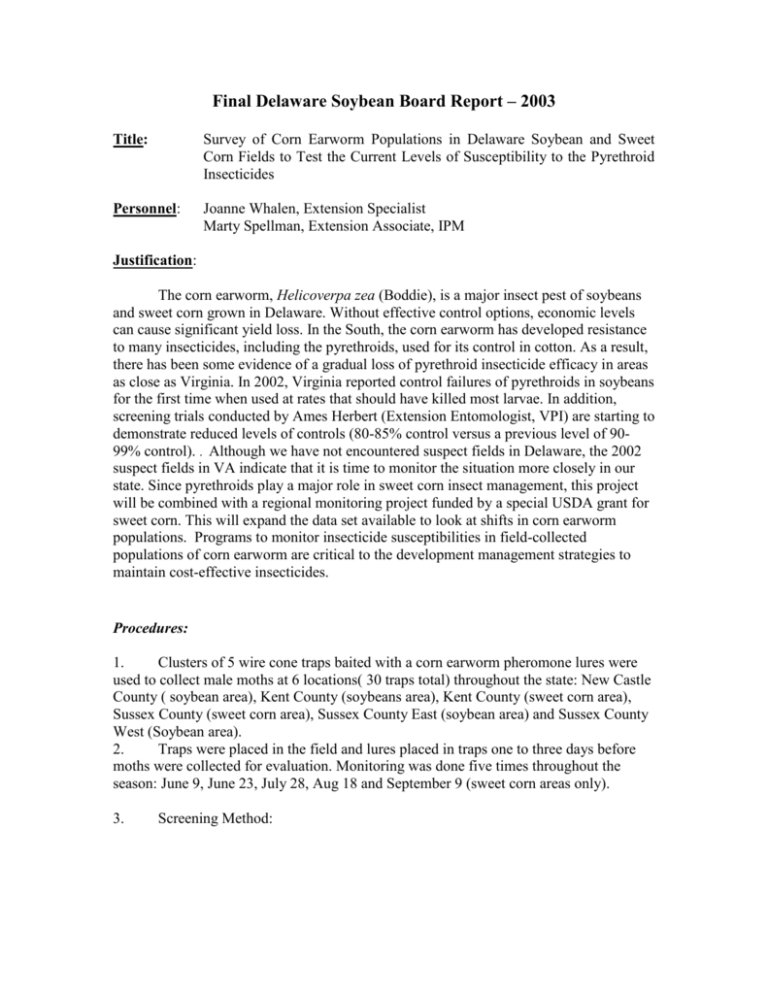
Final Delaware Soybean Board Report – 2003 Title: Survey of Corn Earworm Populations in Delaware Soybean and Sweet Corn Fields to Test the Current Levels of Susceptibility to the Pyrethroid Insecticides Personnel: Joanne Whalen, Extension Specialist Marty Spellman, Extension Associate, IPM Justification: The corn earworm, Helicoverpa zea (Boddie), is a major insect pest of soybeans and sweet corn grown in Delaware. Without effective control options, economic levels can cause significant yield loss. In the South, the corn earworm has developed resistance to many insecticides, including the pyrethroids, used for its control in cotton. As a result, there has been some evidence of a gradual loss of pyrethroid insecticide efficacy in areas as close as Virginia. In 2002, Virginia reported control failures of pyrethroids in soybeans for the first time when used at rates that should have killed most larvae. In addition, screening trials conducted by Ames Herbert (Extension Entomologist, VPI) are starting to demonstrate reduced levels of controls (80-85% control versus a previous level of 9099% control). . Although we have not encountered suspect fields in Delaware, the 2002 suspect fields in VA indicate that it is time to monitor the situation more closely in our state. Since pyrethroids play a major role in sweet corn insect management, this project will be combined with a regional monitoring project funded by a special USDA grant for sweet corn. This will expand the data set available to look at shifts in corn earworm populations. Programs to monitor insecticide susceptibilities in field-collected populations of corn earworm are critical to the development management strategies to maintain cost-effective insecticides. Procedures: 1. Clusters of 5 wire cone traps baited with a corn earworm pheromone lures were used to collect male moths at 6 locations( 30 traps total) throughout the state: New Castle County ( soybean area), Kent County (soybeans area), Kent County (sweet corn area), Sussex County (sweet corn area), Sussex County East (soybean area) and Sussex County West (Soybean area). 2. Traps were placed in the field and lures placed in traps one to three days before moths were collected for evaluation. Monitoring was done five times throughout the season: June 9, June 23, July 28, Aug 18 and September 9 (sweet corn areas only). 3. Screening Method: Day 1: Moths were collected from traps and brought back to the University of Delaware Research station in Georgetown. Moths without damaged wings and with scales over most the wing surface were maintained in ice cream containers ( 10 per container) overnight with a 10% sucrose solution . Day 2: Live moths were transferred from ice cream containers to test vials treated with two doses of the pyrethroid, cypermethrin (5 ug and 10 ug) and one untreated vial. Day 3: Moths were evaluated as alive, dead, or knocked-down (moths that are alive but unable to fly in a normal manner). Moths able to fly 3 meters were considered alive. Moths not able to fly > 3 meters were recorded as "knocked down". Results : See Tables 1-7 Comments: Throughout the season, 1,770 moths were evaluated for their susceptibility to permethrin. Although we did find a few moths surviving at the low rate (5ug) , the survivorship level was less than 2 % which is considered very low. Only one moth out of 1770 survived at the10 ug rate. The good news is that our population is still susceptible -that is pyrethroids are still providing good control of corn earworm. Similar results were obtained in VA in 2003. We plan to conduct this survey for 2 more years to watch for any shifts in the population. Table 1. Average Counts for All Locations Total # Moths Evaluated 0 5 ug 10ug 589 594 587 Season Long % Survivorship 0 511 86.76 Total # Moths Alive 5 ug 10 ug 11 1 1.85 0.17 Table 2. Soybean Area – New Castle County ( Townsend, Middletown and Odessa) Total # Moths Evaluated % Survivorship Date 0 5ug 10ug 0 5ug 10ug June 11 0 0 0 ---June 25 2 1 1 100 0 0 July 30 10 10 10 90 0 0 Aug 20 7 8 8 71.4 12.5 0 Sept 11 ------Season Total 19 19 19 84.2 5.26 0 Table 3. Soybean Area – Kent County (Marydel, Wyoming, Felton, Andrewsville) Total # Moths Evaluated % Survivorship Date 0 5ug 10ug 0 5ug 10ug June 11 0 0 0 ---June 25 2 1 1 50 0 0 July 30 5 4 4 80 0 0 Aug 20 1 1 1 100 0 0 Sept 11 ---------Season Total 8 6 6 75.00 0 0 Table 4. Sweet Corn Area – Kent County (Dover, Wyoming, Harrington, Milford) Total # Moths Evaluated % Survivorship Date 0 5ug 10ug 0 5ug 10ug June 11 ------June 25 2 1 1 100 0 0 July 30 59 61 61 84.75 3.3 0 Aug 20 93 93 92 89.2 2.2 0 Sept 11 20 20 20 90 0 0 Season Total 174 175 174 87.93 2.29 0 Table 5. Soybean Area – Sussex East ( Millsboro, Frankford, Selbyville) Total # Moths Evaluated % Survivorship Date 0 5ug 10ug 0 5ug June 11 7 7 7 85.7 0 June 25 22 20 20 82 0 July 30 66 67 67 89 1 Aug 20 42 44 44 88.1 2.3 Sept 11 -----Season Total 137 138 138 87.59 1.45 Table 6. Sweet Corn Area – Sussex County (Laurel, Bridgeville, Seaford, and Georgetown) Total # Moths Evaluated % Survivorship Date 0 5ug 10ug 0 5ug June 11 9 10 9 55.55 0 June 25 14 13 14 93 0 July 30 69 71 67 91 1 Aug 20 43 43 43 88.4 4.7 Sept 11 10 11 11 100 0 Season Total 145 148 144 88.97 2.03 10ug 0 0 0 0 -0 10ug 0 0 1 0 0 0.69 Table 7. Soybean Area – Sussex West ( Seaford, Laurel, Bridgeville, Greenwood) Total # Moths Evaluated % Survivorship Date 0 5ug 10ug 0 5ug 10ug June 11 8 9 9 50 0 0 June 25 29 31 30 90 0 0 July 30 54 54 53 81 2 0 Aug 20 15 14 14 86.7 0 0 Sept 11 ------Season Total 106 108 106 82.08 0.93 0



